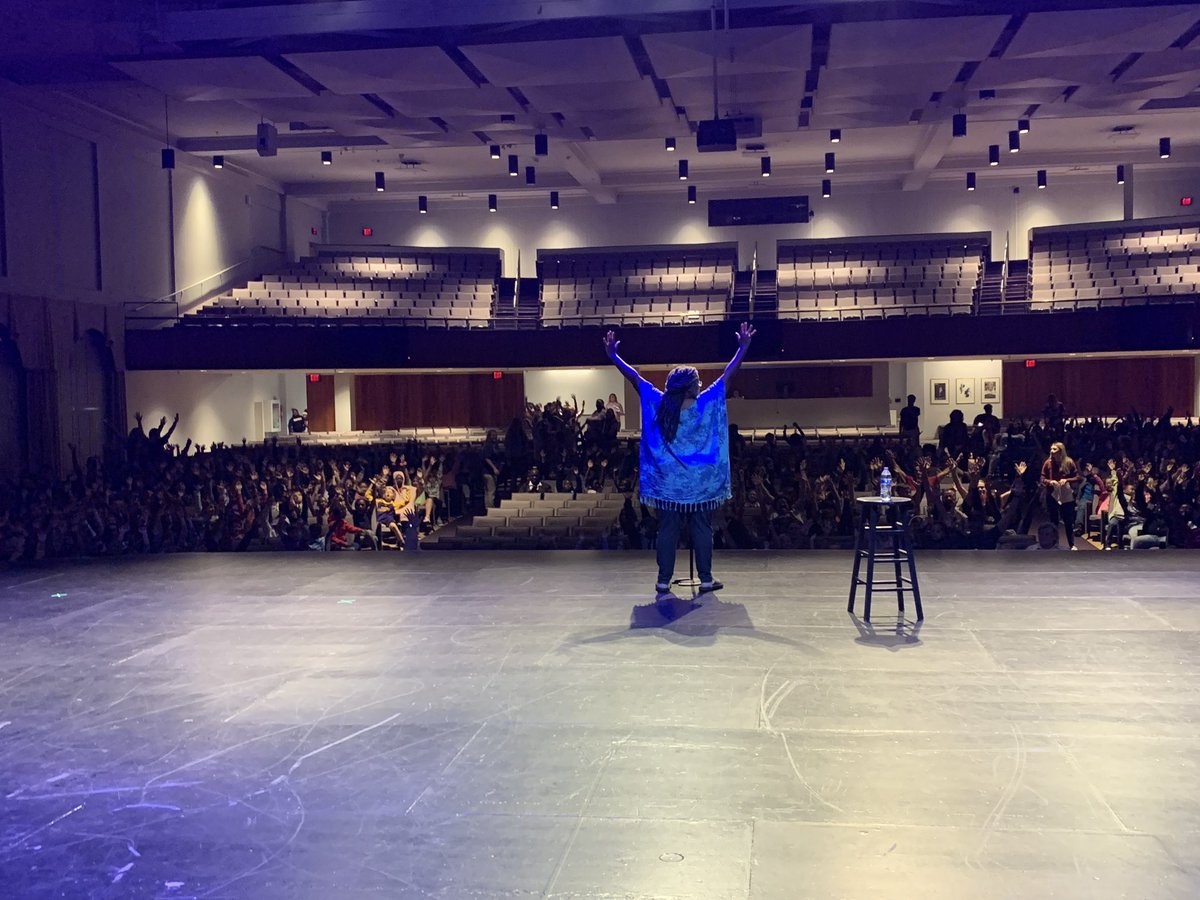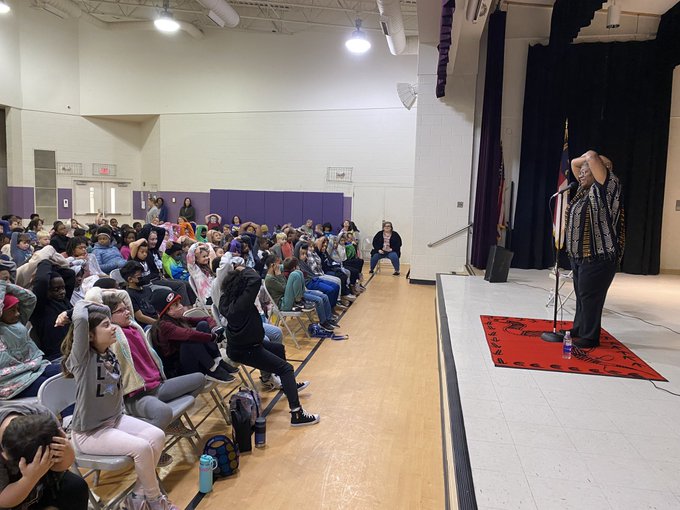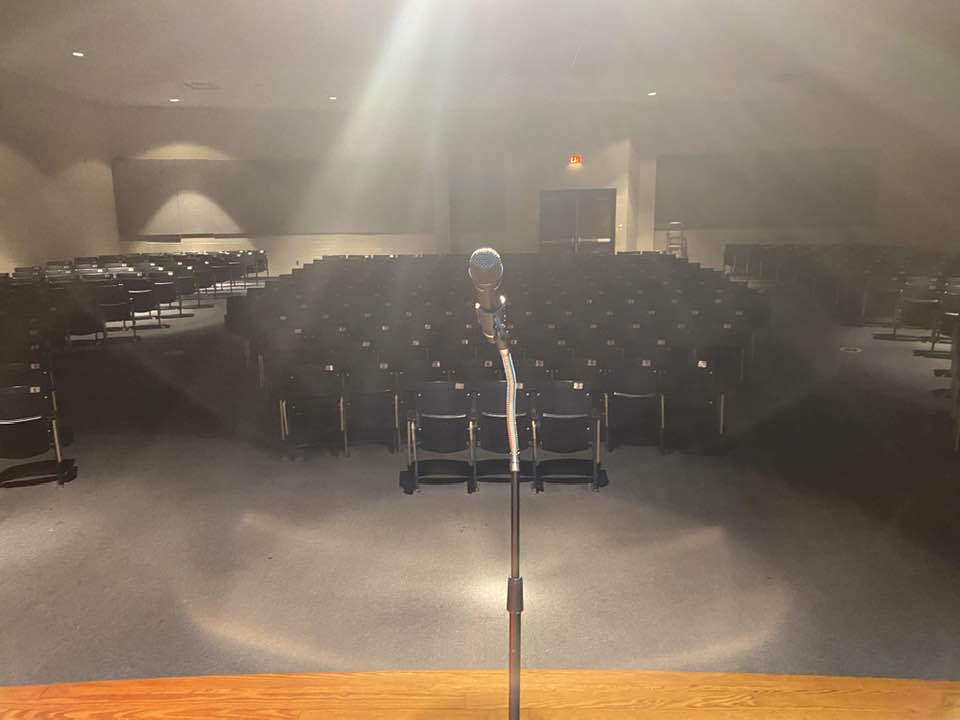Kinetic Storytelling - Engaging The Whole Body In A Story
This past week, I did a quick pic and comment about telling a 45 minute story to little kids. Several people asked about how I do this. It occurred to me that this is a subject I don't think I've ever covered on the blog. So, let's get into it...
My Favorite Ways to Group Audiences -
I create story sets that are eduationally and socially emotionally appropriate for various age groups in school settings.
Pre-K - 2
3 - 5
6th
7th
8th
9th - 12th alone or in any combination
College Presentations - I often talk about the craft as I tell the stories
Other venues/Family/Adults only
Composing Story Sets -
School sets tend to run about 45 minutes. I usually only tell two stories per set. The first story lasts about twenty-five to thirty minutes. The second story lasts twelve to fifteen minutes.
The rest of the time is filled with introductions, community building discussion, and Q&A with the audience.
I have several reasons why I use that structure.
1. Transitioning from story to story breaks an audiences out of one reality and into another. You should reset the audience every single time you tell them a new story. if you don't give them a palate cleansing between stories, they brains can get tired of listening. If you transition them too much, their brains get tired of listening. Think about it as a to do list. The longer the to-do list gets, the harder it is to remember all of the things on it. For stories to stick, keep the number low!
2. For story sets with the smallest kids, if I tell them two stories, I do a physical stretch break between the first and second story. The reason for this is to allow the most antsy ones to move a great deal, and the rest to stretch, march, do isolations, make noise, laugh, and/or wiggle. Once we've done deep breathing and moving about, the littles are ready to listen once more.
3. I don't typically stretch
the older elementary. The transitions are typically enough. However, if I get a really wiggly bunch, I might well do it.
Sometimes, the plan changes!
Every now and then, I shake it up and choose one of the 45 minute stories for a story set.
There are reasons why I do this, but mostly it is because when I have little bitties, it is easier to do one highly participatory story than try to transition them.
The point of a 45 minute story? training the Literacy Brain in young listeners.
Emergent readers need to learn some basic higher level thinking skills that are essential to literacy
- predictive behavior -
Short term predictions help you figure out what is happening moment to moment in the story
Long term predictions are about synthesizing information from the story so you can guess how you think it might conclude.
If your brain isn't focusing on how events are put together and how they might unfold through predictive behavior, you are just listening to a random serious of unrelated things.
- recall so that your brain starts recognizing foreshadowing. That also helps with continuity.- visualizing language - turning language into images
Crafting A 45 Minute Story
How do you craft a 45 minute story for little kids? Here are some tips.
1. The story should be highly participatory.
2. Lots of repetition
3. The repetition should happen in "chapters".
-Some repetition happens in the first chapter and then falls away.
The next chapter has a different set of repetitions
The repetition should be a signal that something is about to happen
A repetition that allows for predictive or recall behavior can/should carry through multiple chapters
4. Lots of physical movement attached to the verbal repetition.
5. The structure should allow for listeners to cement certain refrains so that you can go back to them when you need them.
Example - Rumpelstiltskin
When we first meet this little man, he agrees to spin straw to gold. He has Three repetitive participatory actions.
- When he arrives, I make a sound - Ding, ding, ding, ding, - and move my hands around in a large circle. This is always his arriving sound from that moment until he shows up at the end of the story to try to take the baby.
- When he agrees to spin straw to gold, he asks, "What will you give me?" in a sing song voice and holds out his hand. He repeats this action the first 3 times he appears. By the second time, most kids say this with me, and the last time they all say it.
- When he spins the straw to gold, he "Rolled up his sleeves" I mime rolling up one sleeve. "And Rolled up his sleeves" I mime rolling up the other one. "Then he said, "Stand Back!" I say this in his little squeaky voice and make a motion with my left arm. "Stand Back!" I make the motion with my right arm. After that I break into his little spinning song and move my hands as if I am spinning a wheel.
The listeners join that little action usually from the second time, and they are all in on the third.
I go through that sequence when he spins the straw to gold.
Each of the gold spinning events is a chapter. Different things happen, but the repetitive events mark the beginning and end of that chapter. It helps the listener know what to expect.
As the storyteller, I transition out of that section of the story with information. I tell the listeners that time has passed, Anna married the king, and she had a child. The next chapter starts with the audience initiating a sound from the last three chapters.
"Anna was sitting in the nursery rocking the baby when she heard a sound she hadn't heard in almost two years. What was it?
The listeners immediately make the ding sound and move their hands in a circle with no further prompting. We are now in the next chapter of our story.
Rumpel doesn't spin anything in this new chapter. The refrain he gets is that when he shows up to the queen, he asks in a loud, somewhat mocking voice, "What's my name?!" and there is an accompanying body, face, and arm gesture that goes with it.
Understand that this is just one of the characters in the story.
The Miller has his own refrain that we learn at the beginning of the story. It ends before we ever even meet his daughter. The purpose of his initial refrain is to get the audience used to make a loud, silly, refrain without my prompting them. They learn that they will be doing this in the story, and they don't typically need me to tell them to participate after the start. They just decide on their own when they want to do it. I only give them prompts if I am asking them to initiate a new chapter or movement in the story.
Anna has her own refrains during the spinning straw to gold thing.
The king has his own refrains when he is taking her to spin straw into gold.
The travel between the various rooms full of gold or straw have their own refrains.
As you can probably imagine, it is an exhausting story to tell!
Since you don't transition the kids between stories, they are highly invested in the tale as they take part in the action.
If you connect the physical, verbal, and visual images to the story, you can get kids to sit for
an hour without realizing that's what they've done.
At some point, if people want to know the specific detais, I will break down that entire 45 minute story and explain how each chapter/movement works;
Until then -
Happy Long Form Telling!













